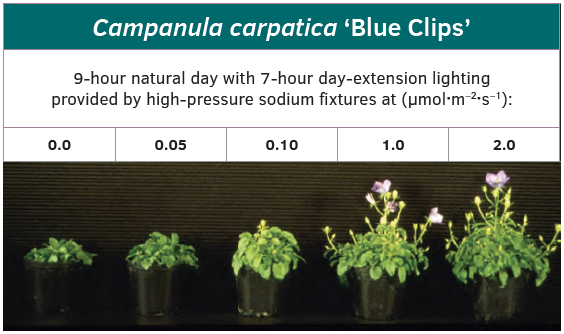Managing Light Pollution
Greenhouse owners and operators are increasingly adding supplemental lighting to increase plant growth. The virtues of high-intensity lighting have been known for decades, but installations are increasingly common as developments in
conventional and LED lighting fixtures advance. While there are many compelling reasons to install lighting fixtures in greenhouses, there are sometimes unintended consequences if the light reaches non-targeted areas.
Light pollution can be considered electric lighting that has unintended consequences to neighboring areas at night. These areas could be other greenhouse sections, or nearby homes or communities when neighbors consider stray light to be undesirable. Light pollution can come from fixtures designed for people (such as new or brighter street lighting) or those designed for horticultural applications. And, as a consequence of increasing urban sprawl, some greenhouses that were once located in rural areas now have homes nearby.
Human centric light pollution. The Netherlands, which has both high densities of people and greenhouses, has been dealing with greenhouse light pollution for many years. There, greenhouse lighting installations are at an especially high intensity because of the types of crops grown (fruiting vegetables and cut flowers, for example) and the low solar daily light integral during the winter. Ordinances have been developed in which as much as 95 to 98% of the electric lighting must be contained within a greenhouse facility.
There is only one practical way to prevent electric lighting from coming through a greenhouse, and that’s by using retractable blackout screens and curtains along the sides and roof. These can be expensive to install, but are typically much less expensive when designed into a new structure rather than added to an existing one. Therefore, when building new greenhouses, greenhouse growers and operators are encouraged to consider the installation of retractable curtains. If there is not currently a compelling reason to include curtains when a greenhouse is constructed, keep the idea in mind when designing the greenhouse so that if curtains are needed later, a retrofit will be easier and less costly.
In addition to cost, there are other considerations to installing a blackout curtain. First, a blackout curtain can serve as an excellent energy curtain, substantially reducing heat loss at night during the winter. Also, consider the possible
implementation of state or local ordinances that could force you to either install a blackout system or limit use of supplemental lighting at night. Restrictions on supplemental lighting translates into fewer hours of use, which reduces crop yield, quality, or both.
Plant centric light pollution. Stray light can also have unintended consequences on plants grown nearby. Many ornamental crops have a photoperiodic flowering response, and the night length is often managed to prevent or induce flowering, whichever is desired. If supplemental lighting is added to a greenhouse section, it can be sufficiently bright to reach neighboring sections to modulate the photoperiod. Some plants, such as poinsettia, coreopsis, echinacea and campanula, are sensitive to extremely low light intensities, such as 0.1 μmol∙m–2·s–1 (about 0.5 footcandles from a white light source) (Figure 1).

Within a population of seedlings, there is often variability in the sensitivity of plants to very low intensities of stray light. When a population of plants is exposed to intensities (or durations) of light that are not saturating for flowering, some plants may be induced to flower over time while others may stay vegetative. The result is a population of plants that is induced to flower in varying degrees — some may be in flower, some have initial signs of flowering, and some completely vegetative.


 Video Library
Video Library 




















